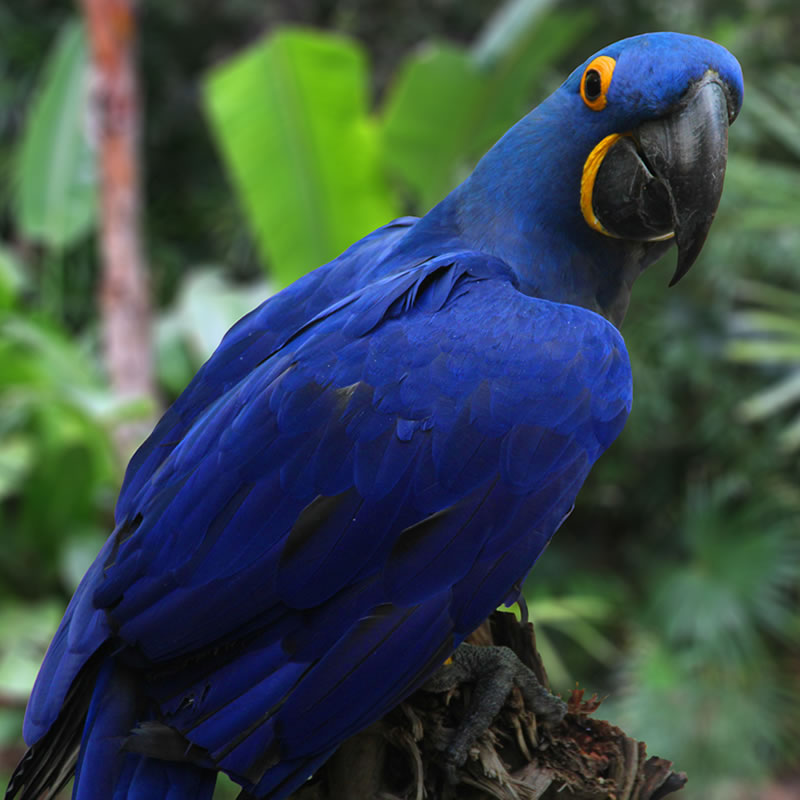
Scientific Name
Anodorhynchus hyacinthinus
Classification
| Kingdom | Animalia |
| Phylum | Chordata |
| Class | Mammalia |
| Order | Psittaciformes |
| Family | Psittacidae |
| Genus | Anodorhynchus |
| Species | hyacinthinus |
IUCN Redlist Status

Location
Hyacinth macaws are a species of parrot, and are related to scarlet macaws and blue and yellow macaws. They can be found in countries such as southern Brazil, eastern Bolivia and small portions of northeastern Paraguay.
Habitat
They are at home in the forests and grasslands of South America's Pantanal region, south of the Amazon River.
Diet
Hyacinth macaws require more fat in their diets than other parrot species. Their main source of food in the wild is from palm nuts which have been passed through the digestive systems of cows.
They also enjoy other types of nuts, fruits and berries, and flowers and stems of plants.
Size
Hyacinths are the largest of the parrot species and one of the most easily recognized. They grow to approximately 40 inches long with a wingspan of up to four feet. Adults generally weigh between 3 and 4 pounds.
Description
Their feathers are a bright blue color with brightly contrasting yellow rings around their large, black eyes and smaller yellow streaks beside their lower beak. Their beaks are long and sharply curved and are gray to black in color. The genus name "Anodorhynchus" means "toothless beak". Their feet are zygodactylous, meaning that they have two toes that face forward and two toes that point behind them.
Adaptations and Behaviors
The most prominent adaptation of hyacinth macaws is their large and incredibly strong beaks. Hyacinths are very intelligent birds and have even been known to use tools. Their zygodactylous toes allow them to use their feet like hands, giving them the ability to grasp objects and making them excellent climbers. They also use their beak to help them climb. Hyacinths kept as pets are known to disassemble their cages or remove the lock, using a combination of strength and intelligence.
Reproduction
Hyacinth macaws mate for life and are extremely affectionate and social birds. Hyacinths make their nests by enlarging holes they find in trees. A female will usually lay a clutch of one to four eggs. The female stays with the eggs until they hatch, during which time the male will bring her food. After about one month, the eggs hatch and the male and female work together to bring food to their chicks. The young will usually stay with their parents for about a year.
Other Facts
Hyacinth macaws are highly prized as pets and are often sold for money. Their numbers in the wild have declined over the years due to hunting and trapping, and they are now endangered.
Some native tribes hunt the macaws for their colorful feathers, which are used to make headdresses or other trinkets for tourists. They are also trapped for the pet trade.
